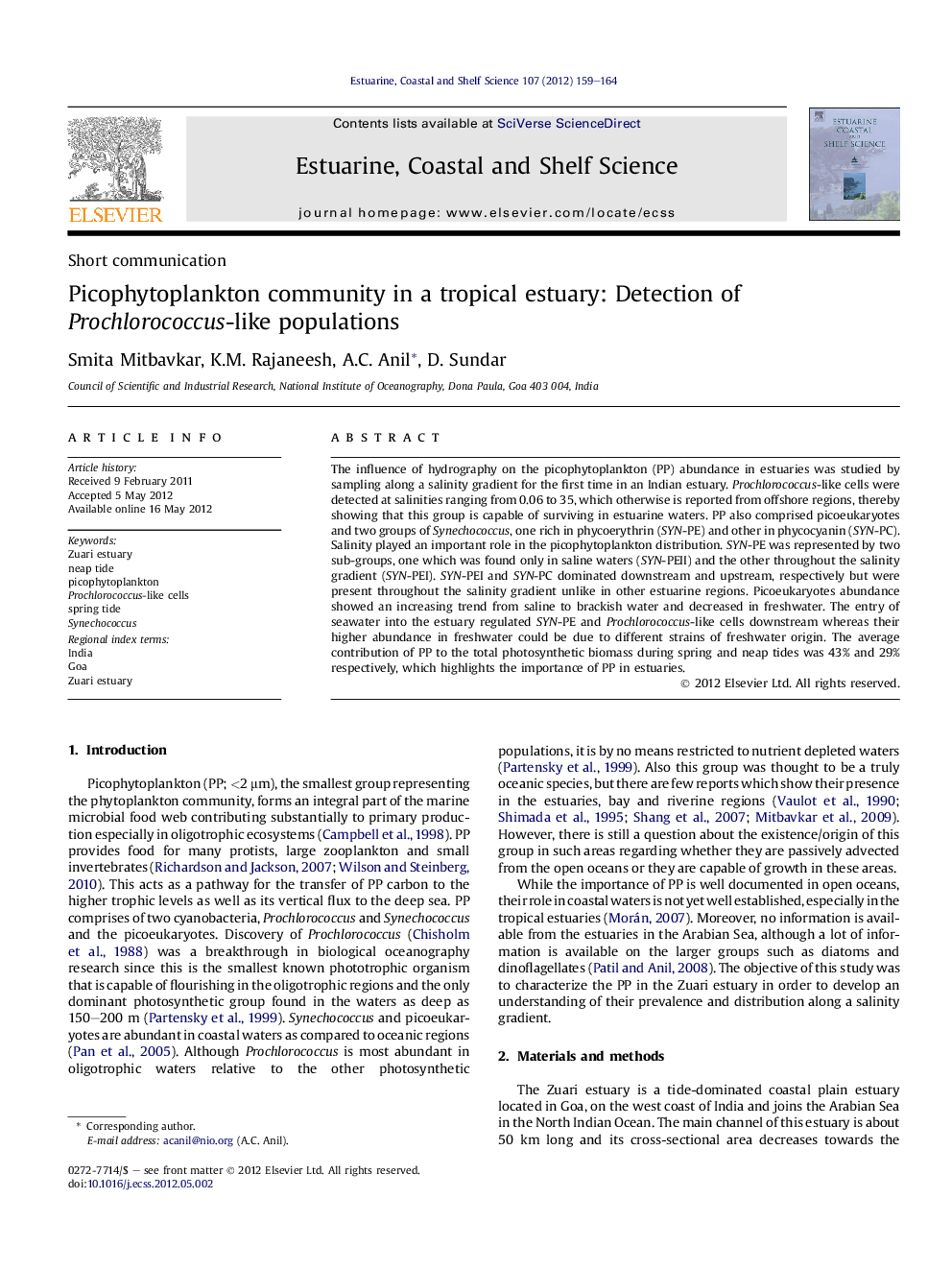| Article ID | Journal | Published Year | Pages | File Type |
|---|---|---|---|---|
| 4540231 | Estuarine, Coastal and Shelf Science | 2012 | 6 Pages |
Abstract
The influence of hydrography on the picophytoplankton (PP) abundance in estuaries was studied by sampling along a salinity gradient for the first time in an Indian estuary. Prochlorococcus-like cells were detected at salinities ranging from 0.06 to 35, which otherwise is reported from offshore regions, thereby showing that this group is capable of surviving in estuarine waters. PP also comprised picoeukaryotes and two groups of Synechococcus, one rich in phycoerythrin (SYN-PE) and other in phycocyanin (SYN-PC). Salinity played an important role in the picophytoplankton distribution. SYN-PE was represented by two sub-groups, one which was found only in saline waters (SYN-PEII) and the other throughout the salinity gradient (SYN-PEI). SYN-PEI and SYN-PC dominated downstream and upstream, respectively but were present throughout the salinity gradient unlike in other estuarine regions. Picoeukaryotes abundance showed an increasing trend from saline to brackish water and decreased in freshwater. The entry of seawater into the estuary regulated SYN-PE and Prochlorococcus-like cells downstream whereas their higher abundance in freshwater could be due to different strains of freshwater origin. The average contribution of PP to the total photosynthetic biomass during spring and neap tides was 43% and 29% respectively, which highlights the importance of PP in estuaries.
Related Topics
Physical Sciences and Engineering
Earth and Planetary Sciences
Geology
Authors
Smita Mitbavkar, K.M. Rajaneesh, A.C. Anil, D. Sundar,
